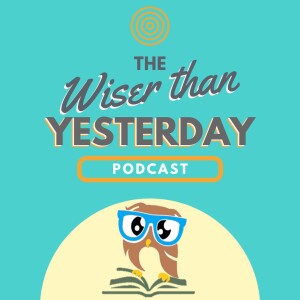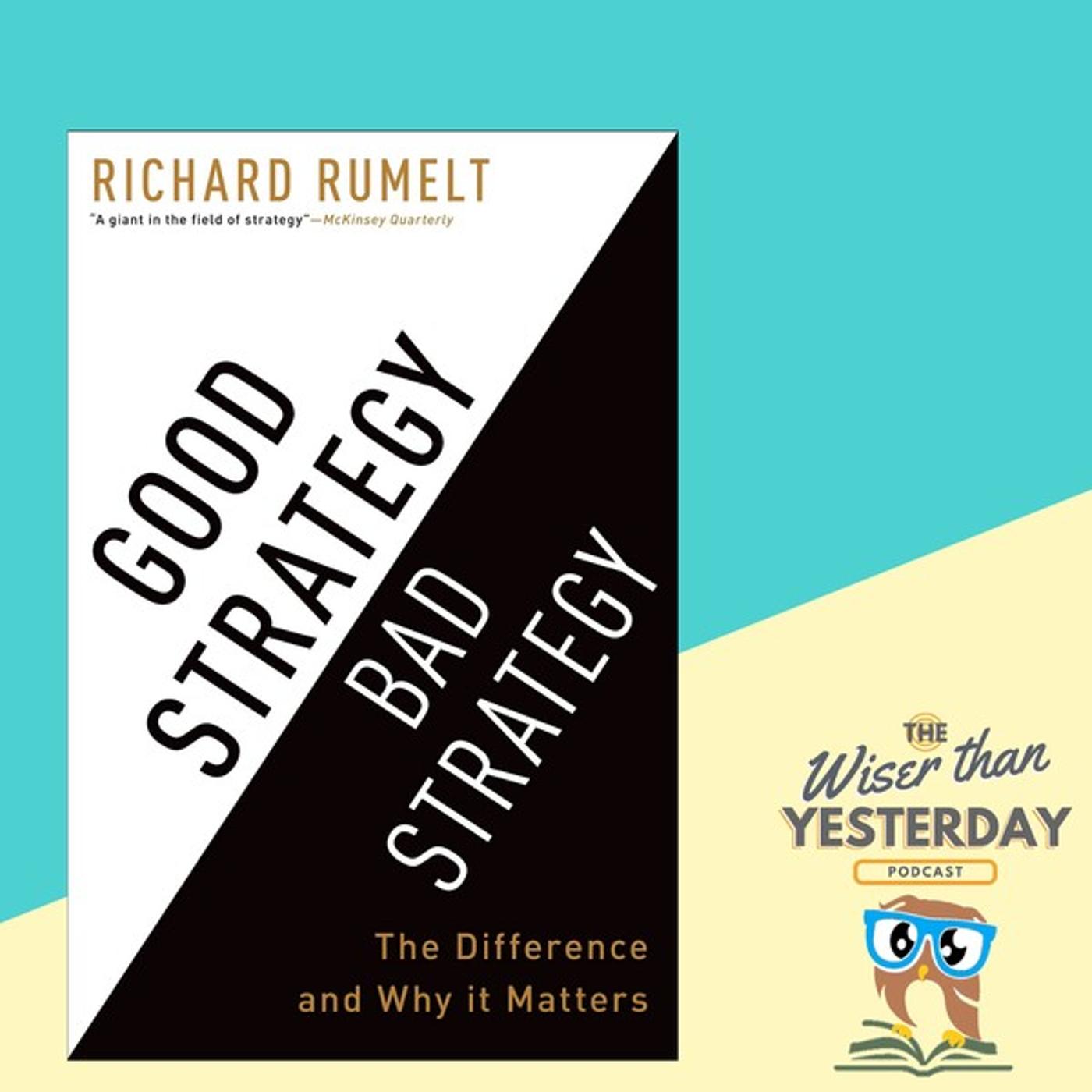
Wiser Than Yesterday: Book club
Arts:Books

Business: Good Strategy, Bad Strategy - Richard Rumelt
 2021-05-19
2021-05-19
Download
Right click and do "save link as"
Good strategy, bad strategy: The difference, and why it mattersBy Richard RumeltKey insightsStrategy =/= ambitious goal setting, vision, charismaAround the 60’s, many authors started ascribing leader’s success to their vision, combined with their charisma. This has resulted in a lot of bad strategy, based on ambitious goal setting. Example: 20/20 plan - 20% growth with 20% profit margin. Often a goal or a vision can be a perfectly fine starting point for a strategy. However, the strategy itself must include precise information on how these goals will actually be achieved.Example: warzoneEvery good strategy has the same foundation: a diagnosis, a guiding policy and a set of coherent actionsDiagnosis: What is the challenge to be overcome? Often requires focus on critical elements to simplify complex realitiesA guiding policy is an overall approach chosen to cope with or overcome the obstacles identified in the diagnosis. Like the guardrails on a highway, the guiding policy directs and constrains action in certain directions without defining exactly what shall be done.A set of coherent actions dictate how the guiding policy will be carried out. The actions should be coherent, meaning the use of resources, policies, and maneuvers that are undertaken should be coordinated and support each other (not fight each other, or be independent from one another).A good strategy demands that you make a choice, based on your diagnosis (strengths, weaknesses). Example: BonsaiGood strategy vs bad strategy-Good strategy identifies the key challenge to overcome. Bad strategy fails to identify the nature of the challenge.-Good strategy includes actions to take to overcome the challenge. Actions are not “implementation” details-Good strategy is designed to be coherent – all the actions an organization takes should reinforce and support each other. Leaders must do this deliberately and coordinate action across departments. Bad strategy is just a list of “priorities” that don’t support each other, at best, or actively conflict with each other, undermine each other, and fight for resources, at worst. Good strategy is about focusing and coordinating efforts to achieve an outcome, which necessarily means saying “No” to some goals, initiatives, and people.Developing a strategy is not a one-time-exercise. The only constant in any situation is change. Your action points, and maybe even your strategy will need to adapt to this change. Change can come from technology, industry trends or competitors. Next to adapting to change, it is also possible to use change to your advantage.Example: The author once asked Steve Jobs how he was going to compete against the Win-tel standard in the personal computer industry. His answer was - ‘I’m not going to, I’m going to wait for the next big thing in the tech industry, and take it’. A good strategy maximises your competitive advantage by limiting your rivals’ opportunities and maximising your resources. Approach strategy like science, start with a hypothesis and continue to test your hypotheses. Once in a while, it pays off to stop doing and reflect on your priorities, example: interview of the CEO.
view more
Don't Forget to leave a comment on this episode
See podvine.com/privacy-policy for podcast listener privacy info.
Hosted on Acast. See acast.com/privacy for more information.
More Episodes
Investing: Introduction to Investing
 2021-11-15
2021-11-15
 2021-11-15
2021-11-15
Body Recap
 2021-10-27
2021-10-27
 2021-10-27
2021-10-27
Body: Born to Run by Christopher McDougall
 2021-10-13
2021-10-13
 2021-10-13
2021-10-13
Body: Death by Food Pyramid - Denise Minger
 2021-09-29
2021-09-29
 2021-09-29
2021-09-29
Body: Burn by Herman Pontzer
 2021-09-15
2021-09-15
 2021-09-15
2021-09-15
Body: Gut by Giulia Enders
 2021-09-03
2021-09-03
 2021-09-03
2021-09-03
Body: Lifespan by Dr. Savid Sinclair
 2021-06-30
2021-06-30
 2021-06-30
2021-06-30
Body: Breath by James Nestor
 2021-06-23
2021-06-23
 2021-06-23
2021-06-23
Body: Why We Sleep by Matthew Walker
 2021-06-16
2021-06-16
 2021-06-16
2021-06-16
Business Recap
 2021-06-02
2021-06-02
 2021-06-02
2021-06-02
0123456789101112131415161719
Create your
podcast in
minutes
- Full-featured podcast site
- Unlimited storage and bandwidth
- Comprehensive podcast stats
- Distribute to Apple Podcasts, Spotify, and more
- Make money with your podcast
It is Free
- Privacy Policy
- Cookie Policy
- Terms of Use
- Consent Preferences
- Copyright © 2015-2024 Podbean.com




